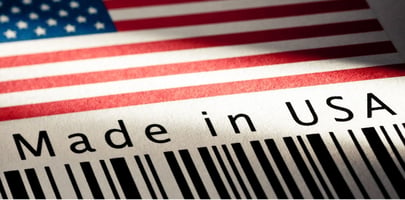The Russian war in Ukraine has been a devastating war for all, with the ramifications of the war...
Why Now Is The Right Time To Diversify Your Supply Chain Away From China
The time has never been better for companies to diversify their supply chain away from China. But how did we get here in the first place? When I visited China for the first time twenty years ago, the first and most compelling reason to outsource the manufacturing over there was the pricing. A few years later former Financial Times correspondent Alexandra Harney explained this phenomenon in his book “The China Price”.
The China price
Low wages
A “reserve army of labor” has fueled the Chinese economy for many years with migrant workers traveling from poor inland China provinces to industrial areas such as Guangdong, Shanghai or Jiangsu. They worked 12 hours a day, sometimes seven days a week, lived in dormitories and went home once a year for the Spring Festival (Chinese New Year). Hard working, frugal and obedient they represented China's biggest competitive advantage.
Export Industry subsidies
Massive government subsidies were designed to bolster exports across many industries. It took until 2016 for China to agree to start dismantling some of its export subsidies after the U.S. long fight at the WTO. It is worth noting that no one across the US political spectrum has disputed the unfairness of these policies against US manufacturers and the need to dismantle them.
Material Costs
Too many times I wondered how my chinese competitors could submit pricing below the bill of materials (BOM). The answer was shocking, either the material was a knockoff (i.e. it looks like kapton polyimide film or 3M467 adhesive tape but it is a copy) or, and even worse, it is counterfeited and it’s almost impossible to tell the difference.
Environmental and Safety Regulations
If you wonder why a lot of wet processes left the US and are not coming back, don’t look too far, it is the environmental regulations. The cost to treat wastewater in North America has been significantly more expensive than to do so in China. You should also know that it is the same for the safety regulations that are strictly enforced by the Occupational Safety and Health Administration (OSHA) in the US while remaining very lax in China.
Industry Clusters
China has successfully followed a long tradition of US industrial clusters. Whether Detroit for the auto industry, Pittsburgh for steelmaking or the Silicon Valley for technology, a concentration of companies with similar technologies, sharing talent and developing synergies is a remarkably successful recipe. Sometimes called free trade zones or industrial parks they have greatly contributed to attract foreign investment and drive the “economic miracle”. Moreover the Chinese government has provided incentives ranging from inexpensive land, tax breaks or rapid customs clearance.
So why have we seen so many US companies diversify their supply chain away from China?
Trade War
One of the reasons was the tariffs imposed by the US administration in 2019 on goods coming from China. The country is accused of stealing intellectual property and forcing U.S. companies to transfer technology as a condition to access the chinese markets.
But this is hardly the only reason.
Environmental challenges
Global climate change is adding pressure on Chinese authorities to address the air and land pollution. The consequences for local businesses are new regulations and increased costs of manufacturing.
Skill shortage
As Chinese companies attempt to climb up the value chain challenges loom, including skill shortage, low consumer trust and poor customer service attitude.
Labor Cost
“Made in China” is not cheap anymore following the increase of the minimum wage in an effort to keep up with the cost of living increases but also new mandatory benefits paid by both employer and employees consisting of medical insurance, pension, unemployment insurance, maternity insurance and so on.
IP Protection
Crucial in a world driven by innovation, China lacks the basic rules of IP protection. More and more companies feel uncomfortable moving their manufacturing to a country where IPs are not secured and the risk of technology theft is always present.
Geopolitical Tensions
Recent years have seen tensions rise in and around China from the violent protests in Hong Kong, China's claims over the South China Sea, China's war on the Uyghurs and their religion or the recent China-Taiwan tensions.
China feels definitely emboldened by its growing economic and geopolitical influence and this is bound to continue and even increase in the near future.
Resilience
COVID has exposed the high dependency of many US companies on China and the challenges to adapt to a crisis situation and make changes to their supply chain. This is an opportunity to develop a new sourcing strategy to come out on the other side of the pandemic as more resilient.
Conclusion
Managing a supply chain is not a binary "all-or-nothing" approach. In the face of the most recent geopolitical threats, companies will continue to rebalance their supply chain around the world. While onshoring sounds attractive it is wishful thinking for many industries affected by capacity limitations in North America. If you are considering to diversify your supply chain away from China, Southeast Asia has proven to be a very viable option with a competitive workforce, excellent infrastructure and massive investments.
-1.jpg?width=146&height=50&name=Kusu%20(1)-1.jpg)



